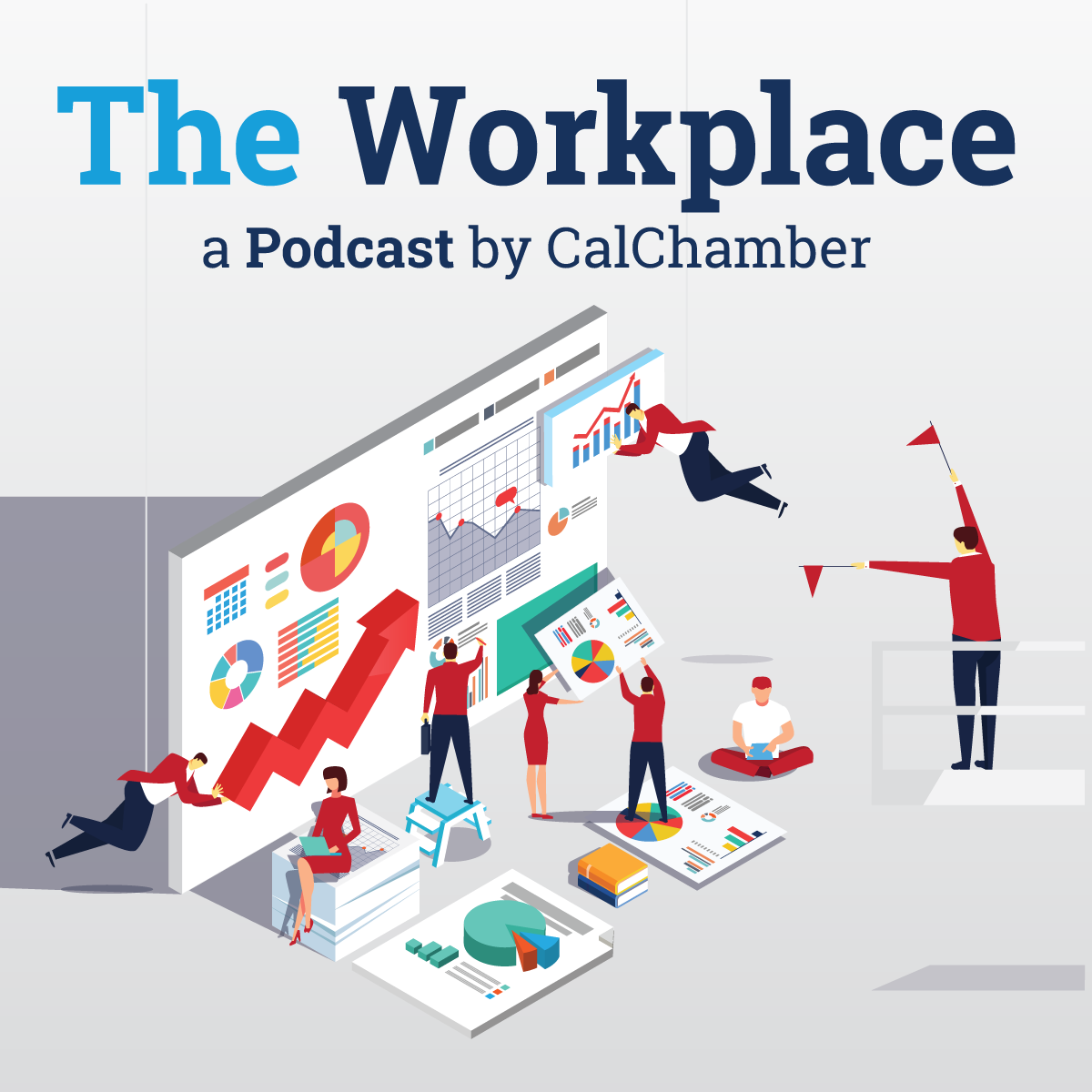
In Episode 115 of The Workplace podcast, CalChamber President and CEO Allan Zaremberg and Lande Ajose, senior policy advisor for higher education to Governor Gavin Newsom, discuss the challenges the state faces in its goal to ensure that higher education remains accessible to all Californians.
California has some of the best regional economies in the world and it is thanks to our higher education institutions, which include prestigious universities like the University of Southern California, UCLA, California Institute of Technology and Stanford, Zaremberg tells podcast listeners. But California’s higher education institutions don’t just include research universities—the state has a community college system that serves as an entry level point for higher education and the California State University system, which graduates professionals.
Keenly aware of the needs of higher education institutions and the demand for jobs and talent, the higher education ecosystem is a priority for Governor Newsom, Ajose says. The Governor sees that higher education is tied to business needs.
“To him, it’s a natural connection and integrated link,” she says.
To help bridge these two sectors, the Governor created the Council for Post-Secondary Education, which brought in Ajose and Zaremberg, and other representatives from business and labor. The council seeks to meet the demands for talent by expanding educational opportunities, especially for people who have not traditionally had access to higher education, Ajose explains.
Challenges in Higher Education
Former California Governor Pat Brown developed California’s Master Plan for Higher Education in 1960, creating opportunities for every Californian to pursue higher education regardless of their academic background, Ajose explains. Thanks to this great compact, California is now home to some of the best higher education institutions in the world.
The Master Plan, however, did not account for the vast number of people who are currently seeking a higher education, nor did it create a permanent funding solution, she points out. California is now at a crossroads as it tries to figure out how to create more space as there is more demand than supply.
The state also is faced with the challenge of creating a balance in the types of degrees that are issued, she says. For example, if the universities are giving out too many business degrees, how can students be encouraged to pursue degrees in science, technology, engineering and math (STEM)?
Another challenge the state must address is preparing students for higher education, helping them stay in college, and helping them graduate within a reasonable timeframe, Ajose tells Zaremberg.
Student success is dependent on the people that surround the student, and on getting the right information at the right time to the students so they are able to meet the challenges at the school they have chosen. Since not all students have access to that knowledge, colleges and universities must create that infrastructure to ensure that students stay in school and continue moving through the curriculum, she says.
Recommendations for Better Access/Equity
The Recovery with Equity Taskforce recently released a report that gives 11 recommendations to address the challenges presented in the higher education system. Falling into four categories, Ajose says, the recommendations focus on creating affordability and equity; streamlining access to higher education; creating inclusion on campus; and how to help students who are in school and balancing a career.
“What we want to do is make sure that we are getting people into college and that we are getting them out of college, that we are doing that effectively and efficiently with high quality education, no matter where they choose to go, and affordably so that students can stay in California so that they are not worried about ‘Will I ever be able to buy a house or have a child because it is so expensive to live here?’” she says.
Lastly, Ajose stresses that it is essential that California’s higher education institutions deal with the reality faced by everyday Californians. Ajose adds that California does not currently have a higher education system that can move at the speed of business development. When it comes to workforce development, it’s important that higher education institutions work in partnership with business and “pick up speed a little bit,” she says.

